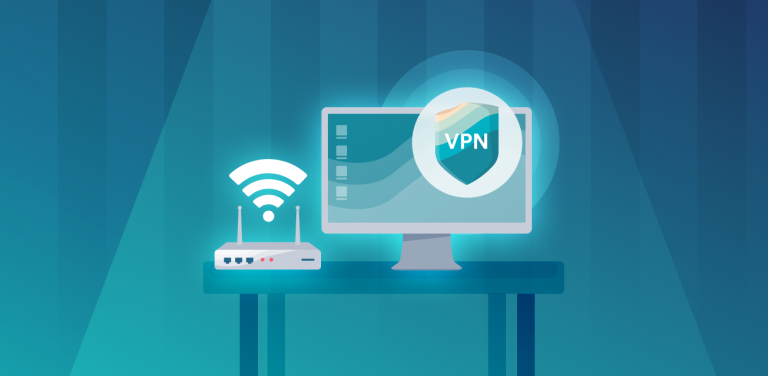Apple Tackles Actively Exploited Zero-Day Vulnerabilities: What You Need to Know [2024]
Welcome to Goto Cyber Protect, where we delve deep into the ever-evolving landscape of cybersecurity to equip you with the knowledge and tools you need to fortify your digital life. In today’s connected world, the significance of cybersecurity cannot be overstated. Each swipe, click, and scroll opens new doors to potential threats that, if left unchecked, can compromise our personal information, privacy, and even financial security. Amidst this backdrop of digital vulnerabilities, Apple’s recent move to address critical security flaws in its software underscores a vital step forward in safeguarding our digital experiences.

In this article, we’ll explore Apple’s latest security updates designed to tackle two actively exploited zero-day vulnerabilities. These flaws, identified as CVE-2024-23225 and CVE-2024-23296, represent significant risks, not just to individual privacy but to the security infrastructure at large. Zero-day vulnerabilities, by their nature, are flaws that hackers exploit before developers become aware of them, making timely updates and patches crucial in the battle against potential breaches.
The growing concern around zero-day flaws and their impact on user privacy and security
The growing concern surrounding these zero-day flaws and their impact on user privacy and security can’t be understated. They serve as a stark reminder of the continuous arms race between cybersecurity professionals and threat actors. By staying informed and prepared, we can collectively bolster our defenses against these invisible adversaries.
Join me as we navigate through Apple’s response to these vulnerabilities, understand their implications, and discuss how you can protect yourself and your devices from potential harm.
Understanding the Zero-Day Flaws

At Goto Cyber Protect, we believe knowledge is the first line of defense in the digital realm. To arm you with this vital tool, let’s delve into the intricacies of zero-day vulnerabilities and the specific flaws Apple has recently moved to rectify.
What Are Zero-Day Vulnerabilities?
Zero-day vulnerabilities are essentially software flaws that have been discovered by threat actors before the developers or the public are aware of them. The term “zero-day” refers to the fact that the developers have zero days to fix the vulnerability before it’s potentially exploited. These vulnerabilities are particularly dangerous because they can be used to carry out unexpected and often highly sophisticated attacks, leaving users vulnerable until a patch is released.
Detailed Overview of the Identified Vulnerabilities
Apple’s latest security updates focus on mitigating two critical vulnerabilities that have been actively exploited. Let’s discuss each vulnerability:
1. CVE-2024-23225: A Memory Corruption Issue in Kernel
This vulnerability resides within the core of the operating system, known as the Kernel. It’s a memory corruption issue, meaning that it could allow an attacker with arbitrary kernel read and write capability to manipulate the memory in a way that bypasses the kernel memory protections. Such actions can lead to unauthorized access to sensitive data, system crashes, or even allow an attacker to execute arbitrary code with elevated privileges.
2. CVE-2024-23296: Memory Corruption in RTKit RTOS
Similar to CVE-2024-23225, this vulnerability affects the RTKit real-time operating system (RTOS) used in various Apple devices. It also involves memory corruption, providing attackers with a pathway to bypass kernel memory protections through arbitrary kernel read and write capabilities. The RTOS is crucial for managing hardware resources efficiently and reliably in real-time, making this vulnerability particularly concerning for the overall integrity of the operating system.
The Potential Risks to Users
The exploitation of these vulnerabilities poses significant risks to users, including but not limited to:
- Unauthorized Access: Attackers could gain unauthorized access to personal and sensitive information stored on the device.
- System Compromise: The integrity of the entire operating system could be compromised, allowing attackers to manipulate or disable security features.
- Data Manipulation and Loss: There’s a risk of data being altered or deleted, which could lead to loss of important personal or business information.
- Privacy Breach: Exploitation of these flaws could allow malicious actors to spy on users, accessing their cameras, microphones, and location data without consent.
Apple’s Response to the Threat

In response to the emergent threat posed by these zero-day vulnerabilities, Apple has acted swiftly to fortify its digital fortress, releasing critical security updates aimed at neutralizing the risk. Here’s a closer look at Apple’s countermeasures and how they play a pivotal role in safeguarding users’ digital sanctuaries.
Security Updates Released by Apple
Recognizing the severity of CVE-2024-23225 and CVE-2024-23296, Apple has introduced enhanced validation checks within its operating systems. These updates are a testament to Apple’s commitment to user security, addressing the vulnerabilities head-on by preventing attackers from exploiting the identified memory corruption issues.
Version-Specific Updates and Device Applicability
Apple’s strategy in combating these vulnerabilities includes issuing version-specific updates to ensure broad spectrum protection across its device ecosystem. Here’s the breakdown:
- iOS 16.7.6 and iPadOS 16.7.6: Aimed at bolstering the defenses of older devices, this update covers iPhone 8, iPhone 8 Plus, iPhone X, iPad 5th generation, iPad Pro 9.7-inch, and iPad Pro 12.9-inch 1st generation. It’s a crucial step in ensuring that even devices not on the latest hardware receive necessary protections against potential exploits.
- iOS 17.4 and iPadOS 17.4: Targeting newer devices, this update extends to iPhone XS and later, iPad Pro 12.9-inch 2nd generation and later, iPad Pro 10.5-inch, iPad Pro 11-inch 1st generation and later, iPad Air 3rd generation and later, iPad 6th generation and later, and iPad mini 5th generation and later. This update underscores the importance of keeping current devices secure against emerging threats.
The Significance of the Updates
The release of these updates is more than just a routine software patch; it’s a critical move to mitigate the risks associated with the identified vulnerabilities. By enhancing validation processes within the operating systems, Apple has effectively closed the door on these particular avenues of attack, safeguarding user data against unauthorized access, system compromise, and privacy breaches.
These updates underscore the ongoing battle between cybersecurity professionals and threat actors, highlighting the importance of staying vigilant and proactive in the face of evolving digital threats.
For users, the message is clear: updating your devices is not just about accessing the latest features; it’s a vital step in protecting your digital life from unseen dangers.
The Bigger Picture: Zero-Day Trends in 2024
Zero-day vulnerabilities are not isolated incidents but part of an escalating trend that poses significant challenges to cybersecurity professionals and organizations worldwide.
The Escalating Trend of Zero-Day Exploits
This year, we’ve observed an uptick in the frequency and sophistication of zero-day exploits. These vulnerabilities are increasingly becoming the tools of choice for attackers looking to infiltrate systems undetected. The critical nature of such exploits lies in their novelty; being unknown to software vendors until it’s potentially too late, they offer a potent weapon against even the most well-guarded digital fortresses.
Case in Point: The WebKit Type Confusion Flaw
Earlier in 2024, Apple addressed another significant vulnerability, the type confusion flaw in WebKit (CVE-2024-23222), which underscored the ongoing battle against zero-day threats. WebKit, the engine powering the Safari browser, was found susceptible to a type confusion error that could lead to arbitrary code execution.
This flaw exemplifies the diverse nature of zero-day vulnerabilities and their ability to compromise various components of our digital ecosystem, from operating systems to web browsers.
Challenges in Combatting Zero-Day Threats
The fight against zero-day threats is a complex, ongoing battle. Cybersecurity professionals face several key challenges:
- Detection and Response Time: The stealthy nature of zero-day exploits means they can remain undetected until after damage has been done. Swift detection and response are crucial yet challenging to achieve.
- Increasing Sophistication of Attacks: Attackers continually evolve their techniques, using more sophisticated methods to exploit vulnerabilities, making defense mechanisms simultaneously more critical and difficult to design.
- Keeping Software Updated: For users and organizations alike, keeping all software up-to-date is a fundamental yet challenging aspect of cybersecurity hygiene. The gap between the release of a patch and its widespread implementation is a critical window of opportunity for attackers.
- Educating Users: Raising awareness about the importance of cybersecurity best practices remains a cornerstone in preventing exploits. However, educating the vast and diverse landscape of users about the nuances of zero-day threats and the importance of updates is an ongoing challenge.
The landscape of zero-day exploits in 2024 is a testament to the dynamic and relentless nature of cybersecurity threats. As we navigate these challenges, the role of informed individuals and organizations in adhering to cybersecurity best practices has never been more critical. Our collective vigilance and proactive measures are essential in mitigating the risks posed by these ever-evolving threats.
Read Also: Top 10 Patch Management Software for 2024
CISA’s Involvement and Wider Security Concerns
It’s crucial to highlight the role of authoritative entities like the U.S. Cybersecurity and Infrastructure Security Agency (CISA) in navigating the tumultuous waters of digital threats. CISA’s proactive stance and guidance are pivotal in the collective effort to mitigate cybersecurity risks, including the recent vulnerabilities addressed by Apple.
CISA’s Proactive Response to Vulnerabilities
CISA has been at the forefront of responding to and mitigating the impact of critical vulnerabilities, including those recently identified in Apple’s ecosystem. By adding these flaws to its Known Exploited Vulnerabilities (KEV) catalog, CISA not only acknowledges the severity of these threats but also mandates federal agencies to apply necessary updates by specified deadlines.
This directive underscores the urgency and importance of addressing these vulnerabilities to protect national security, critical infrastructure, and individual privacy.
The Importance of Adhering to CISA’s Updates and Advisories
CISA’s advisories serve as a crucial beacon for organizations and individuals navigating the complex cybersecurity landscape. Adherence to these updates is not just about compliance; it’s a fundamental aspect of a robust cybersecurity posture.
By following their guidance, entities can ensure they are protected against known threats and are contributing to the broader defense against cyber adversaries. It’s a testament to the notion that in cybersecurity, staying informed and up-to-date is synonymous with staying secure.
Other Notable Vulnerabilities Highlighted by CISA
Beyond Apple’s ecosystem, CISA’s vigilant eye extends to vulnerabilities across the digital domain. For instance, an information disclosure flaw affecting Android Pixel devices (CVE-2023-21237) and an operating system command injection flaw in Sunhillo SureLine (CVE-2021-36380) have also been spotlighted. These vulnerabilities highlight the diverse array of threats that span different devices and platforms, underlining the universal need for cybersecurity vigilance.
- CVE-2023-21237 on Android Pixel devices illustrates the pervasive risk of targeted exploitation that can lead to unauthorized access and data leakage.
- CVE-2021-36380 in Sunhillo SureLine showcases the potential for code execution with root privileges, pointing to the severe impact such vulnerabilities can have on network infrastructure and data integrity.
These examples, while distinct from the zero-day vulnerabilities in Apple’s software, are part of the broader security conversation. They underscore the importance of a proactive, informed, and comprehensive approach to cybersecurity—a principle that CISA’s efforts embody and promote.
Protecting Yourself: Tips and Recommendations
Here, we share actionable advice to fortify your defenses against zero-day vulnerabilities and a myriad of cyber threats.
1. Keeping Your Apple Devices Secure
Apple’s swift response to vulnerabilities with security updates is a critical line of defense. Here’s how you can ensure your devices are fortified:
- Check for Updates: Regularly navigate to your device’s settings to check for available updates. For iOS and iPadOS, go to Settings > General > Software Update.
- Install Updates Promptly: Once an update is available, install it without delay. These updates not only enhance your device’s functionality but, more importantly, patch security vulnerabilities.
- Stay Informed: Follow trusted cybersecurity sources, including Apple’s own security update channels, to stay abreast of the latest patches and recommendations. We also recommend using patch management software to ensure automatic software updates.
2. Cybersecurity Best Practices
Beyond specific updates, adopting a comprehensive cybersecurity posture is crucial. Here are foundational practices everyone should integrate into their digital routines:
- Use Strong, Unique Passwords: Ensure your passwords are complex and unique across different services. Consider using a password manager to securely store and manage your passwords.
- Enable Two-Factor Authentication (2FA): Adding an extra layer of security beyond just a password significantly reduces the risk of unauthorized access. Enable 2FA on all services that offer it.
- Be Skeptical of Unsolicited Communications: Phishing attempts, whether through email, messages, or phone calls, are a common tactic used to exploit vulnerabilities. Always verify the authenticity of requests for personal information.
- Secure Your Network: Use a secure Wi-Fi connection with a strong password. Consider using a Virtual Private Network (VPN) like Surfshark when accessing public Wi-Fi to encrypt your internet connection.
- Back Up Your Data: Regularly back up your data to an external drive or a cloud service. In the event of a cyber attack, this ensures you don’t lose important information.
- Stay Informed: Cybersecurity is an ever-evolving field. Keeping informed about the latest threats and trends can help you stay one step ahead of potential risks.
Conclusion

As we navigate through the intricate landscape of the digital age, the recent zero-day vulnerabilities highlighted by Apple serve as a potent reminder of the ever-present cyber threats. Our journey through understanding these vulnerabilities, Apple’s decisive response, the broader trend of zero-day exploits in 2024, CISA’s involvement, and practical steps to enhance our cybersecurity posture underscores a critical narrative: vigilance, knowledge, and proactive measures are our best allies in the face of evolving cyber threats.
Key Takeaways
- Zero-day vulnerabilities, like those recently addressed by Apple, pose significant risks to personal privacy and security.
- Apple’s timely updates and the guidance issued by organizations such as CISA are critical components of a comprehensive cybersecurity strategy.
- Adhering to cybersecurity best practices, including regular software updates, using strong passwords, enabling two-factor authentication, and staying informed, are fundamental to protecting ourselves against cyber threats.
Moving Forward with Goto Cyber Protect
At Goto Cyber Protect, our commitment extends beyond just informing you about the risks. We aim to empower you with the knowledge and tools necessary to safeguard your digital existence actively. We encourage each of you to take these insights and recommendations to heart, implementing them to protect your personal and professional digital spaces.
What Next?
Stay connected with Goto Cyber Protect. Follow us for the latest updates, insightful analyses, and practical advice on cybersecurity. Together, let’s build a more secure digital future, one proactive step at a time.
Additional Resources
To further aid in your cybersecurity journey, here are some valuable resources:
- Apple Security Updates: Visit the Apple Security Updates page for the latest information on security patches and updates.
- CISA’s Known Exploited Vulnerabilities (KEV) Catalog: Check out CISA’s KEV catalog to stay informed about vulnerabilities that have been actively exploited.
- Cybersecurity Educational Resources: Explore resources such as the National Cyber Security Centre for guides and advice on enhancing your cybersecurity knowledge and practices.
As we conclude, remember that in the digital world, awareness and action are your best defenses. Keep informed, stay vigilant, and actively engage in fortifying your cyber defenses. Together, we can navigate the complexities of cybersecurity, ensuring a safer tomorrow for all digital citizens.


![Why Surfshark’s Black Friday Deal is a Steal [2023]](https://gotocyberprotect.com/wp-content/uploads/2023/10/VPN_AFF_General_1080x1080_EN-768x768.png)
![Does Surfshark VPN Work on iPhone?: Everything You Need to Know [2023]](https://gotocyberprotect.com/wp-content/uploads/2023/10/istockphoto-1506871668-612x612-1.jpg)
